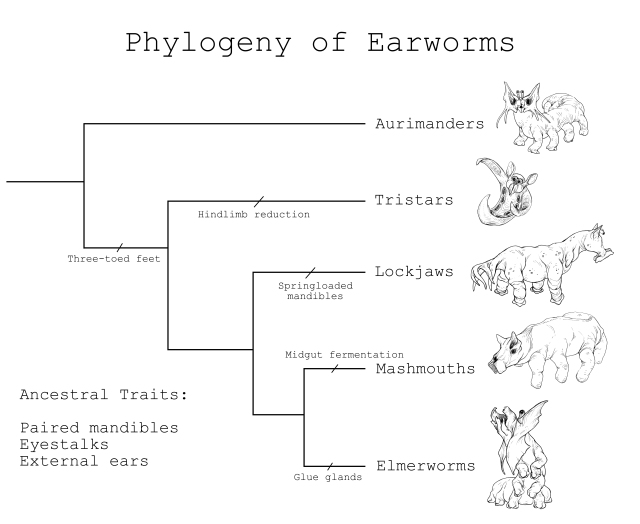 Zoom out: Red Plant Derivatives
Zoom out: Red Plant Derivatives

Aurimanders – There is a lot of diversity within earworms, making it difficult to identify groupings based on appearance alone. Some of the more bizzare species belong to this early branch, while the classic worm-with-feet form can be found in most of the more derived branches.
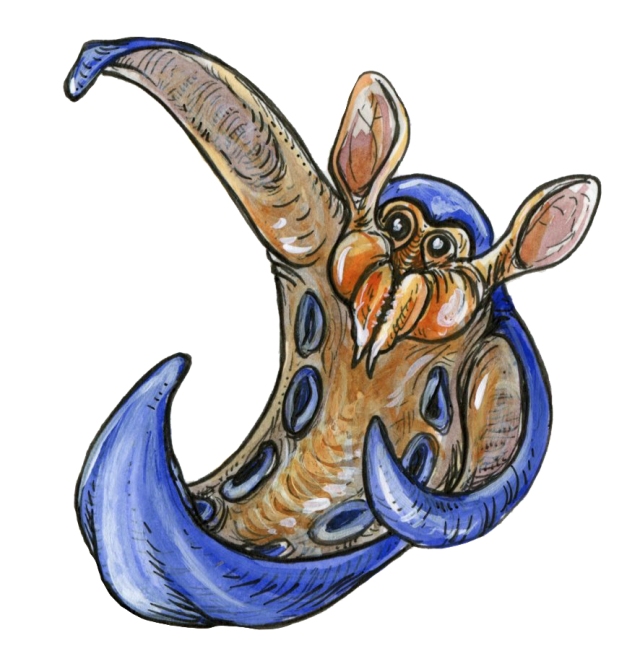
Tristars – Like a cross between starfish and monkeys, tristars are specially adapted to swing through trees and access hard to reach foods. The six remaining pairs of suction feet not adapted to brachiation can be used to pry open black plant trunk-fruits, restrain dangerous animals such as archersnakes, and carry their spoils while traveling.
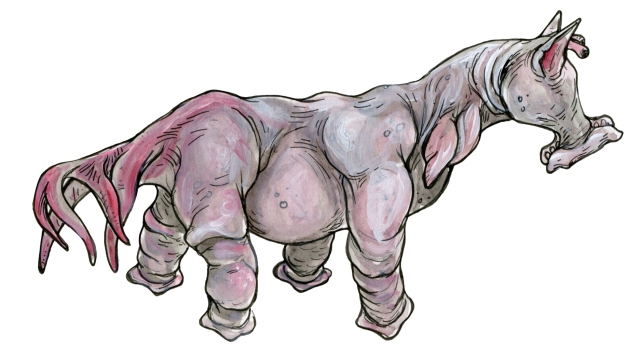
Lockjaws – In this group, the third and fourth limb pairs developed a proper musculature for running. Lockjaws are named for their spring-loaded mandibles, which snap shut upon contact with prey. The force is enough to sever the neuroskeleton of almost any animal. However, the neuroskeleton is also their weakness. Because it contains life-critical tissues, it optimizes flexibility over rigidity and cannot bear too much weight without buckling. Larger lockjaws rely on surrounding soft tissue to absorb impact, making them slow and inefficient runners.
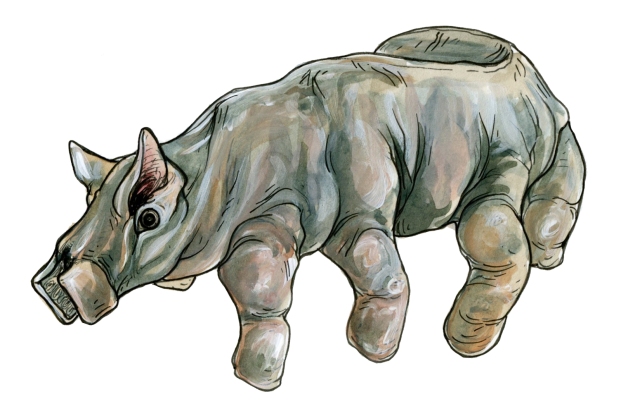
Mashmouts – Their specialty is tough plant matter that other herbivores leave be. Their mandibles have flattened into a grinding surface sometimes lined with a razor edge for stripping the microphylls off of black plants. The process this food in their cecum, a blind sac branching off the junction of the stomach and spiral intestine (midgut).

Elmerworms – These predatory stalkers are capable of secreting a glue-like substance from glands below their mouths. Their traps take many forms, from hidden webs to minefields of false dew. Like spiders, they can adopt an active or passive hunting style.
Examples
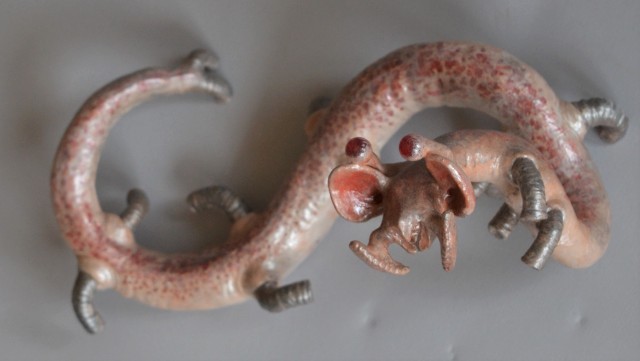
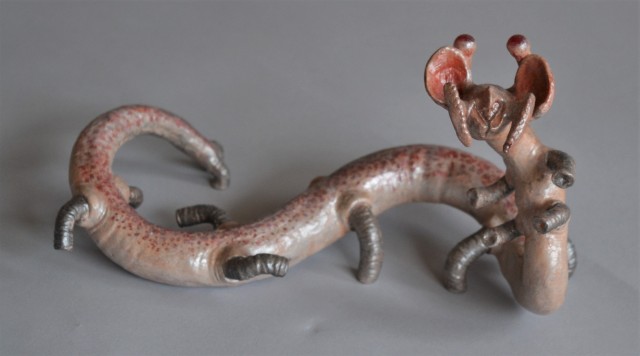
Giant Earworm
“It may be too early to call this a giant. There might be bigger earworms out there. For now, a fourteen legged worm the length of five men is sufficiently giant for our purposes. This herbivore has been sighted grazing on the banks of a nearby river, using its flattened mandibles to cut vegetation from the stems. Two humanlike ears lie flat against the side of the head. Behind them, a pair of short eyestalks peek out.”
– Alex O’Hearn, biologist, Odyssey I
The giant earworm is the fourth longest land animal on Ilion and the second heaviest. While slow, a thick coat of slime protects it against most predators and it can deliver a crushing bite if disturbed.
Plains Lockjaw
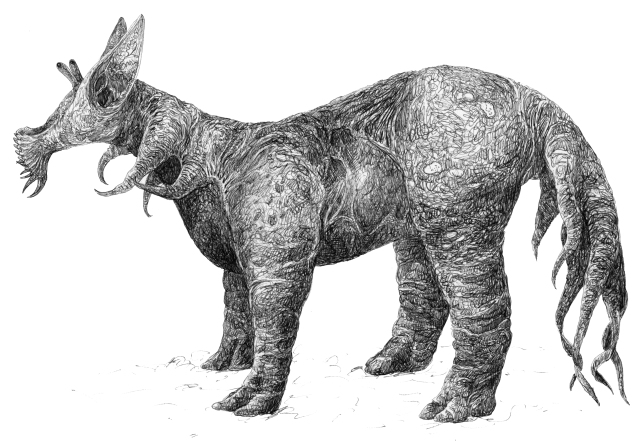
The plains lockjaw is a heavily built predator that has adopted a quadrupedal gait. Its legs are built for shock absorption rather than speed. Still, they are faster than their prey and that’s what counts. Plains lockjaws are pack hunters. They use their spring-loaded mandibles to hold onto prey and puncture a major blood vessel located on the ventrum. Although the hunt we observed was unsuccessful, it was clear what they were trying to do.
Six ribbons of flesh hang raggedly from the tail; their function is unknown. However, we are fairly certain they are modified legs. Together with the four stout running legs and an additional two pairs of grasping forearms, they add up to fourteen. And as we know, fourteen is the standard limb number for Ilian land animals, with a few exceptions.
– Alex O’Hearn, biologist, Odyssey I
Lockjaws’ ancestral resemblance to worms has been lost to selective forces, molding them into sturdy predators. The plains lockjaw, like many lockjaws, has a tail made of vestigial limbs appended to what remains of the body’s back end. This species evolved its tail to serve two proposes: display and feeding the young. When in season, the male grows out its colorful tail ribbons to excessive length to attract females. Once bonded, the female nibbles down his tail until only stumps remain, which will grow back once their offspring are weaned. The flesh is fatty and nutritious and the male isn’t the only one who produces it. After a litter is born, the female’s tail also hypertrophies to provide sustenance for the young. The tissue heals quickly and lacks nerve endings during this phase of the reproductive cycle.
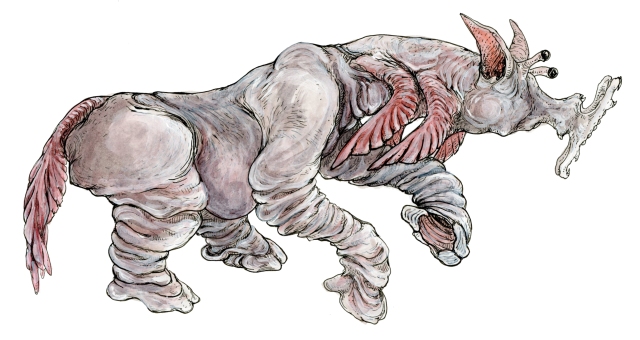
The elephant earworm displays the shock absorption physiology necessary for a creature with such flexible bones to be able to move around in higher-than-Earth gravity.
